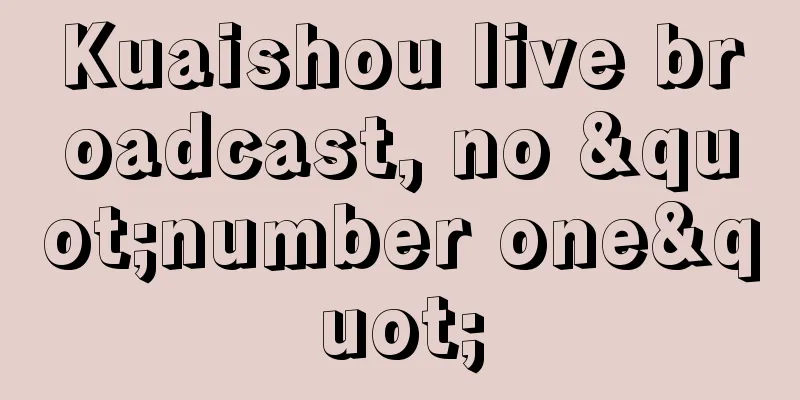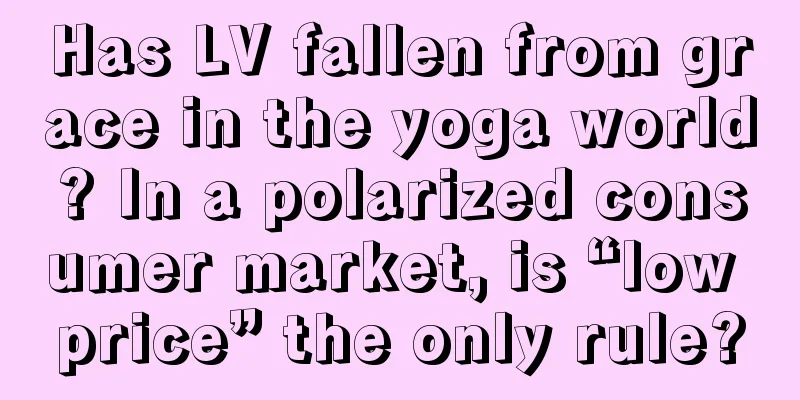Luxury goods do not need brand positioning

Positioning theory opposes brand extension, but luxury brands are all extending. Take Hermès as an example. The brand owns leather goods, saddlery, silk fabrics, textiles, women's and men's ready-to-wear, jewelry, shoes, belts, gloves, hats, perfumes, watches, furniture, tableware and other categories. Positioning theory emphasizes simple and clear cognitive labels, but for many people, it is difficult to distinguish the differences between brands such as Gucci, Hermes, and Louis Vuitton. Positioning theory suggests that specialist brands are superior to extended brands. For example, in the drinking water category, Nongfu Spring has a higher brand value than Wahaha because the former is an expert brand that only produces drinking water, while the latter is an extended brand covering multiple categories such as drinking water and eight-treasure porridge. But a friend who has worked at Ogilvy China for ten years told me that China only has famous brands, not brands. For example, Wanglaoji, Nongfu Spring, Haval Motors, etc. are not brands, but just well-known trademarks. He believes that being well-known is not a brand. For example, for a brand like Chanel, customers will buy it even if it releases mineral water, which means that customers are loyal to Chanel. For a famous brand like Wang Laoji, customers will not buy Wang Laoji perfume. Customers will buy BMW shirts, but not Wanglaoji shirts. This is the difference between a brand and a famous brand. Positioning theory opposes creativity for the sake of creativity and emphasizes rationality over sensibility. Jack Trout wrote in his book Obviousness: "Many advertising people have simply failed to understand the nature of sales. Sales does not depend on creativity, elegance, or imagination; it is simply a matter of logic, a science involving rules and proofs of rational thinking." "Nothing has done more lasting damage to the advertising world than tricking creatives into thinking they were making films rather than commercials. Think of the 'Creol Curse' - many a Clio winner lost advertising contracts soon after taking home the trophy." He went on to express the view in his book Differentiating: Emotions are unreliable and must be supported by reason to work. By reason, I mean reasons to buy your brand instead of your competitor's. He even argues that strictly emotional behavior occurs primarily in very young children and adults with severe cognitive impairments. But the philosophy of luxury brands is to value brand stories, artisan traditions and artistic connotations. The founders’ experiences of brands such as Chanel, Louis Vuitton and Hermès are brand stories that customers love to talk about. The founders’ focus on production skills, especially their sponsorship of artists, is an important source of the high premium of luxury goods. We believe that accurate positioning is the starting point for creating a brand (including luxury brands). Any brand must first occupy a position before it can build a building of brand value on this basis. After the brand is correctly positioned, it must continue to build emotional value, spiritual value and meaningful value. Just as Li Zehou expressed in The Journey of Beauty, any form of beauty must contain a rational concept. Beauty is a balance between rationality and sensibility, form and content, and so is brand. 01 Products make the brandIt is not the brand that makes the product. Positioning theory holds that a brand’s largest self-media is its representative products, such as Yuanqi Forest’s black and white bottle, Wanglaoji’s red can, and Nike’s waffle shoes. After the brand positioning is determined, the most important task is to create a hit product around the core positioning. For example, the representative brand of natural water is Nongfu Spring, and the 550ml red bottle is its hit product. After Wanglaoji determined its positioning as a beverage for preventing getting angry, it kept the 330ml red can for 10 years before launching a new brand. The purpose was to make this product a representative of the brand and deeply embedded in the customer's cognition. The same is true for luxury brands. The origin of Hermès is that its founder Thierry Hermès created a layer of leather for the collar worn around the horse's neck while working in a saddlery shop. In the 19th century, the upper class of Paris was full of the atmosphere of showing off wealth and comparison. As the main means of transportation, horses were also one of the props for people to show their status. Before this, no one paid attention to the feelings of horses, and collars could easily scratch the skin of horses. With his superb craftsmanship and serious attitude, the horse harness products he created soon became best-sellers among the upper class, thus establishing the foundation of the Hermès brand. In 1914, World War I broke out. A large number of men died on the battlefield, and women began to leave their families and enter society. In addition, the market for horse-drawn carriages gradually shrank, so Emile Hermès, the son of Thierry Hermès, decided to create handbags for women. Hermès's leather bags continued the craftsmanship of horse harnesses, with a soft touch and the most advanced zipper technology at the time. The product level far surpassed similar leather bags of the same period. The same is true for the Louis Vuitton brand. The founder, Louis Vuitton, was the son of a carpenter and worked in a luggage store in Paris when he was 14 years old. In 1854, the French Industrial Revolution was basically completed, and people began to travel by train. At that time, the suitcases were all domed and difficult to carry. Louis Vuitton discovered this pain point and made the first flat-top suitcase, using the finest wood and waterproof materials. In 1875, Louis Vuitton launched a suitcase equipped with hangers, where clothes could be hung to prevent wrinkles and moisture. In order to facilitate customers to travel by steamship, car and airplane, Louis Vuitton has successively designed suitcases suitable for these scenarios. 02 The Origin of Luxury BrandsPositioning theory holds that a brand needs to find its own original group of people and let core customers help you spread the word. For example, the original target group of Red Bull in the early days was long-distance bus drivers, who had a higher demand for energy replenishment, and the original target group of Nike in the early days was long-distance runners, who had a higher demand for high-performance running shoes. The original target group of Yuanqi Forest is female customers who are anxious about sugar intake on Xiaohongshu. The original target group of Santonban is users of a niche app called “Xiachufang”, a group of whom are heavy coffee consumers and more professional than ordinary customers. For luxury goods, their early users were mainly royal families, aristocrats and movie stars. And the way they win the favor of these people is definitely not through brand loyalty, but through excellent products. Louis Vuitton won the hearts of its original customers with its suitcases suitable for various travel scenarios, while Hermès won the recognition of discerning aristocratic customers with its exquisitely crafted horse harnesses. We often confuse cause and effect: it is excellent products that make a brand, not brand loyalty that makes product sales. It is the choices of a small number of customers that influence the choices of the majority of customers, not that the brand is meant for the masses from the moment it appears. The so-called brand loyalty refers to the brand's loyalty to customers, not the customer's loyalty to the brand. Designing several dimensions to measure customer loyalty to a brand is really a blind and arrogant mentality. At this point, some people may think that customer loyalty to brands does exist: many customers will buy everything from Louis Vuitton, giving the impression that whatever these brands launch, people will buy it. How do you view this phenomenon? Is this seemingly blind loyalty behavior a manifestation of brand loyalty? 03 Every luxury brand has a unique positioningTo understand this phenomenon, we need to introduce the origin population model. The origin crowd is like ripples on the water, extending layer by layer into a larger circle. The crowd in the core position will affect the crowd in the non-core position. This transmission path is a straight line from A to C. Customers in Part A will choose Louis Vuitton's luggage, Chanel's little black dress, Dior's perfume, and Hermès's handbags. They will not choose Louis Vuitton's perfume, Chanel's luggage, and Hermès's little black dress (if these brands really exist). The original crowd will only buy the core products of a brand. They will buy Gree air conditioners, Fotile range hoods, Hisense TVs, Lenovo laptops, and Huawei mobile phones, instead of buying all from Haier. In fact, Haier once had all of the above products, from computers to air conditioners. There are also some loyal customers who will buy all of Haier's products, just like some customers will buy all products launched by luxury brands. These people are in areas B and C. It is the behavior of these customers that leads to the illusion of "brand loyalty". The causal relationship here must also be made clear: it is the customer choices in area A that lead to purchases in areas B and C, and the core customers in area A will only purchase the core products of a brand. The book "Luxury Strategy" mentions that luxury brands are complementary, not competitive. It is common to see someone carrying an Hermès bag into a Cartier store. The salesperson will ask you what you bought at Hermès and then recommend complementary Cartier products. At the retail level, luxury brands are not competing with each other, but complementing each other. One of the characteristics of luxury goods is that since each brand has its own field, it is difficult to compare two brands, unless some vague words such as "on par" are used. In fact, consumers do not buy from either A or B, but buy one product from each. There is no problem when two brands of equal quality are built next to each other. On the contrary, the two stores can complement each other in terms of brand image and social status. It is normal to walk into a Cartier store with an Hermès paper bag. The salesperson will not ask you to leave the bag at the door, but will ask you what you bought at Hermès and then sell you complementary Cartier products. If a brand treats the choices of non-core groups as the behavior of all customers, it will lose its core customers and then continue to lose all customers. If brand loyalty really existed, would you buy Hermès beer? Even if you really would buy it, Hermès would not really launch it, because you are not the original target group of Hermès. 04 Luxury Brands’ Focus StrategyHermès started out making horse harnesses and later made women's bags. Is this a brand extension? We think so, but on the one hand, competitors are not as professional, and on the other hand, Hermès applied the technology of making horse harnesses to leather bags, which did not exceed its own capabilities. So this brand extension behavior is reasonable. Louis Vuitton focuses on the spirit of travel and pursues the principle of satisfying all the needs of customers. However, this principle has a limit, which is to conform to the spirit of travel and never order things that cannot be taken away. Playing cards, tennis rackets, scarves, and even mahjong, anything that can be taken away can be made. However, things that cannot be taken away, such as furniture, cannot be made. Louis Vuitton's principle is to deeply bind the brand with the spirit of travel, so that customers will think of Louis Vuitton when they think of travel. The methodology advocated by positioning theory is to make the brand equal to a word. When customers actively find you when they have a need for this word, it means the success of brand positioning. The focus strategy also saved Barbery from its decline. In 2002, global luxury goods consumption exploded, but Barbery's growth was only 2%. The core strategy of the new CEO was to return the brand to trench coats. She closed factories in the United States and Wales, and design centers in Hong Kong and the United States, and concentrated the core design and production links in England. In 2010, it took back Barbery's fragrance and cosmetics business and focused its resources on creating cooler trench coats that customers would buy again and again. At the end of fiscal 2012, Barbery's total revenue reached $3 billion and its operating profit was about $600 million, double what it had five years earlier. The CEO who saved the brand from decline said: It is not uncommon for luxury goods companies to start with a single product and then expand their business. Louis Vuitton initially became famous for its suitcases, and Gucci made its mark with leather goods. However, after these brands expanded their business, they still used their original core products as their main source of profit. Looking at the entire luxury industry, we realized that Barbery was the only luxury company that did not make good use of its brand history. We neither regarded traditional products as the pride of the company nor continued to innovate on the basis of tradition. The Barbery brand started with its unique waterproof gabardine fabric. Thomas Barbery created this fabric and the corresponding windbreaker style mainly to meet military and exploration needs. Fortunately, we have not yet outsourced the production of this patented fabric to a foreign factory. Our own textile factory is located in Yorkshire in the north of England, very close to the windbreaker factory in Castleford. What could be better than a long-standing authentic brand with an efficient vertical production chain? Yet, by failing to invest in this production chain and by not leveraging its full potential, we have almost neglected our most important asset. Arnault, who founded the luxury goods group LVMH, promised the French government that he would retain all businesses and not lay off employees when he acquired the Bossac Group, which owns Dior. After the acquisition, Arnault only retained Dior's fashion business. He sold all other businesses and laid off 8,000 people in five years. In just four or five years, Arnault made more than 10 times the profit from this deal. Although it is morally questionable, Arnault has a very sharp vision: the most valuable part of the entire group is Dior's fashion business. 05 Visual Hammer of Luxury BrandsThe visual hammer is the visual message used for brand identity. Barbary's plaid shirt and Louis Vuitton's LV are both visual hammers of the brand. The purpose is also very simple, to allow customers to identify them at a glance. The promotion strategy of luxury goods is also the public relations start-up advocated by positioning theory. They are happy to spread brand information in the form of winning awards, attending cocktail parties, supporting artists' creations, attending Oscar and Cannes award ceremonies and news reports. This kind of information is more reliable and more spreadable. Louis Vuitton's advertising - which oscillates between politicians, sports stars, astronauts - never strays from its core: travel. Louis Vuitton, which started out as a suitcase brand, knows that the spirit of travel is the core value of the brand and a competitive advantage that cannot be taken away by other competitors. There is a brand ladder model in the book "Brand Positioning General Knowledge" that explains this phenomenon. A brand should climb to the top step by step, just like climbing a ladder. Louis Vuitton started with suitcases, and gradually injected the spirit of travel into the brand. Its marketing activities must be consistent in direction and closely linked. If one day, Louis Vuitton starts to promote trench coats, it will be entering Barbery's advantageous battlefield, which is unwise. It is equivalent to stepping down from its own brand ladder and climbing up another ladder, and there is already a brand on this ladder, ready to kick it down at any time. So why does Louis Vuitton launch products that go against its core positioning, such as skipping ropes, mobile phone cases, boxing suits, hand sanitizers, etc. We believe that the main value of these products is to create topics, such as Nike's second-hand shoe trading, Wuling's masks, etc. In short, we believe that the methodology of luxury brands - focusing on products, focusing on advantages, original population, public relations activation, and visual hammer - is also advocated by positioning theory. Luxury brands do not need brand positioning because their practices have gone beyond the boundaries of positioning theory, not because they do not conform to the principles advocated by positioning theory. The practical transcendence of luxury brands is the shaping of the brand's emotional value, spiritual value, cultural value and meaningful value, which is what the current positioning theory lacks. Author: Zhang Zhiyu WeChat public account: Zhang Zhiyu (ID: zhiyu2307) |
<<: Why do young people not like to watch exquisite vlogs anymore?
Recommend
The new trend among young people in 2024: zero-sugar socializing, shallow socializing, and socializing with friends...
Why are more and more young people falling in love...
This article explains how brands can do Xiaohongshu store live streaming
How to do a good job of Xiaohongshu store live bro...
When will Douyin’s food delivery service become a big hit?
Do you still remember "Xindong Takeaway"...
How to activate the vacation mode on Shopee? Related questions answered
In order to avoid being unable to manage the store...
What are the requirements for doing business on eBay?
There are many cross-border e-commerce platforms n...
How to make users fall in love with your brand in one second? Here are 4 tips!
As the number of consumers increases, the number o...
Why must companies pay attention to membership business starting from 2023?
This article objectively analyzes the importance o...
What is the difference between Amazon's gross profit and net profit?
Because everyone will calculate their own profits ...
Please answer 2024, the top ten trends in automotive marketing
In 2024, the Chinese automotive industry has under...
Ten thousand words to tell the story of Don Quijote: The stores are super cheap, but it has been growing for 34 consecutive years, and its revenue is hundreds of billions, crushing MUJI. What did Don Quijote do right?
In the public's opinion, if a store is not wel...
Is it easy to make customized products on Amazon? Which products are easy to sell on Amazon?
Some merchants on Amazon provide customized produc...
Oriental Selection went to work for JD.com, but can this solve its growth anxiety?
Delivery within hours is a territory that almost e...
I went to Northeast China to do private domain business: it seems to have many difficulties, but it is also a fertile soil!
The private domain market in Northeast China is gr...
Are sales on Amazon monthly sales? What is the difference between order amount and sales amount?
There can be some confusion about the concept of s...
How to sell products on cross-border e-commerce platforms? How to choose categories?
With the development of globalization and digitali...









